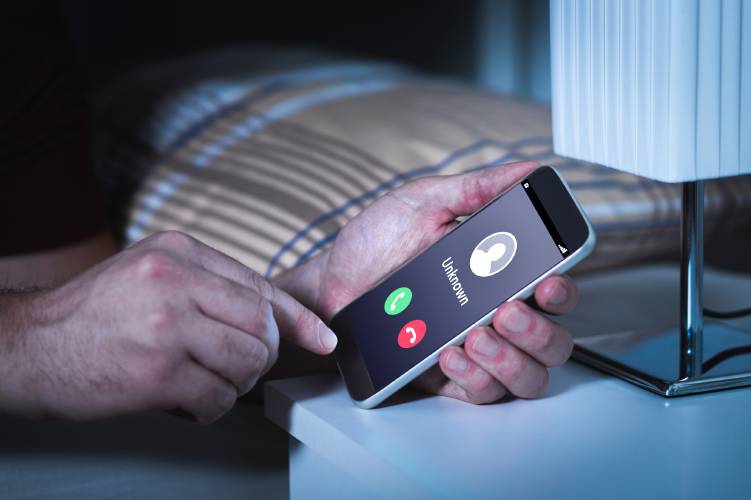Consumer Corner with Anita Wilson: Spam texts a growing threat to consumers

Spam texts are a growing threat to consumers. Dreamstime
| Published: 03-27-2025 1:35 PM |
Have you gotten a text message saying you owe money for unpaid tolls?
Perhaps you’ve received a message saying your package delivery was cancelled due to a problem with your street address. Or maybe it was a text message from a bank reporting they locked your account due to suspicious activity.
If you’ve noticed an uptick in these types of text messages, you’re not alone.
The Federal Communications Commission reports that these scam messages are a growing threat to consumers. The simple reason is that it’s a reliable consumer base. The FCC estimates that 86% of Americans own a cellphone — and that 95% of the text messages sent to cellphones are read.
Just like phishing emails or robocalls that are sent to thousands of phone numbers or email addresses at once, these bogus “smishing” messages are sent to thousands of cellphones at the same time in hopes that someone will read the message, take the bait and respond.
Like robocalls, the phone number on the text message can be spoofed or changed to make it appear that the message is coming from a local phone number in order to trick you into opening and reading the message.
These schemes often work because scammers also play on your emotions to get you to engage. Like robocallers, a robotexter may try to scare you or make you believe there is a threat to your account or finances. They may pretend to be from a government agency or a business you know. Text messages may sound believable — an unpaid bill, a problem with a bank account or law enforcement actions against you — to get you to respond quickly without verifying that the information is valid.
These messages often contain links to a website or a telephone number making it easy to respond to the supposed problem. Unfortunately, if you click on the link or call the telephone number, you’ll be connected to a website or login page that could look very real or with a scammer who claims to be from the business or government agency.
Article continues after...
Yesterday's Most Read Articles
 Northampton Housing Authority boss placed on leave
Northampton Housing Authority boss placed on leave
 NCAA Div. 1 Men’s Ice Hockey: UMass stuns Minnesota 5-4 in OT, advances to regional final
NCAA Div. 1 Men’s Ice Hockey: UMass stuns Minnesota 5-4 in OT, advances to regional final
 UMass Men’s Basketball: Three Minutemen enter transfer portal
UMass Men’s Basketball: Three Minutemen enter transfer portal
 Putting themselves on the line: Activists say nonviolent protests focus attention, inspire others, drive change
Putting themselves on the line: Activists say nonviolent protests focus attention, inspire others, drive change
 Ready to roll on roads: Amherst priority list tees up $4.55M to rebuild some of town’s worst stretches
Ready to roll on roads: Amherst priority list tees up $4.55M to rebuild some of town’s worst stretches
 USDA yanks $3.4M in aid to state food banks
USDA yanks $3.4M in aid to state food banks
You may be asked to provide your address to redirect the package delivery, your bank account and routing information or credit card number to pay that unpaid toll or your account number and PIN to confirm your identity with the bank.
The scammer will then use the financial information you provide to drain your bank account or rack up charges on your credit card. Personal information, such as a Social Security number, can be used to commit identity theft or fraud in the future. There is also a risk that clicking on the link or website could launch viruses, malware or spyware onto your phone.
Some robotexts offer a contest or giveaway or say that you have won a prize. They tell you to fill out a form or provide some information to enter the contest or claim the prize. Job seekers may be targeted also with phony job offers that contain a link to an application to fill out.
Other phony text messages might look like the sender accidentally sent a message to you instead of the intended recipient. The message could contain someone else’s name, talk plans to get together or a reminder to pick them up from the airport. It could be an honest mistake, but more likely it could be an attempt to get you to respond and let them know they have reached the wrong person. They may use your response to spark a conversation that could lead to “an amazing investment opportunity” or other type of scam.
Here are some warning signs for smishing text messages:
■Messages from unknown numbers not in your contact list.
■Long phone numbers with more than the standard 10 digits.
■Group messages sent to you by someone you don’t know that also include several other anonymous recipients.
■Misspellings, which can be purposely to get around your phone’s blocking or spam-filtering tools.
■Messages from government agencies asking for payments.
■Messages from companies or banks you don’t do business with already.
■Links and websites to click on inside text messages.
■Messages urging you to act quickly, respond immediately.
■Any text message that’s unexpected.
Here’s what to do if you get a spam or robotext message:
■Do not respond with a text message.
■Don’t text “STOP” to stop receiving messages because this will alert the scammer that your number is active and you’ll likely get more messages.
■Verify any information in the message before acting. If the message looks like it’s from your bank, exit the text message, call customer service at the number on the back of your card or go to your mobile banking app and check your account there.
■Don’t click on a link or call the phone number in the message.
■Turn on your phone’s security settings to filter messages from unknown sources or enable spam protection.
■Block the number.
■Forward unwanted messages to SPAM or 7726.
■Robotexts and robocalls can be reported to the FCC at https://consumercomplaints.fcc.gov.
To cut down on the number of text messages you receive from legitimate companies, check a company’s privacy policy when they ask for your cellphone number. Find out how to opt out of text messages if you’d rather be contacted another way. You may have to uncheck a preselected box to do so. Read the fine print to determine whether they will be able to sell or share your phone number with other companies.
If you have a consumer question or would like to report a scam, contact the Consumer Protection Unit in Greenfield at 413-774-3186 or in Northampton at 413-586-9225 or visit our website, NorthwesternDA.org/consumer-protection-unit.
Anita Wilson is director of the Northwestern District Attorney’s Office Consumer Protection Unit, which is a Local Consumer Program working in cooperation with the Office of the Massachusetts Attorney General.






 ‘For the love of music’: Florence Community Band set to hold first-ever multigenerational concert
‘For the love of music’: Florence Community Band set to hold first-ever multigenerational concert South Hadley ready for next round of Buttery Brook improvements
South Hadley ready for next round of Buttery Brook improvements Photo: Ladder precision
Photo: Ladder precision Amherst council likes proposed U-Drive overlay, vote set for April 7
Amherst council likes proposed U-Drive overlay, vote set for April 7
